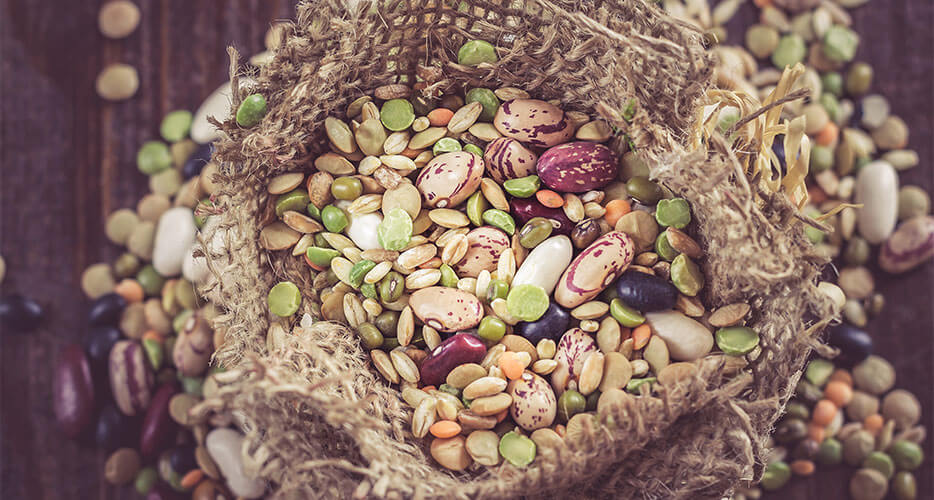
Phosphorus, copper, magnesium, potassium and manganese; not only macronutrients, but also micronutrients: minerals needed in limited quantities, but essential for the proper functioning of our body.
Misura's interview with Dr. Andrea Del Seppia
Let's talk about the topic with our nutritionist, Dr. Andrea Del Seppia.
Dr. Del Seppia, what are mineral micronutrients?
The "micronutrients" are substances necessary for our body in very limited quantities when compared to our "macronutrient" needs (ie, carbohydrates, proteins and fats), which should instead be taken in significantly larger quantities. Unlike macronutrients, micronutrients do not represent an energy source: this means that they do not supply kcal (the unit of measurement of the energy we introduce). In fact, micronutrients include vitamins and minerals: both are essential for our body to function optimally in each district. In the right grams, milligrams or micrograms, it is therefore necessary to include them in our diet to avoid health problems that are dangerous.
What are the most valuable and what functions do they perform within our body?
There are many minerals and there are many functions. Some play a structural role: it is the case of phosphorus (P), which in our body makes up salts together with calcium (Ca) and these salts constitute the structure of bones and teeth, mainly in the form of calcium phosphate that we find in the crystals of hydroxyapatite. This element is also a fundamental component of the phospholipids that make up the membranes of our cells (these are molecules in which lipids are joined to a phosphate group). The phosphate group is also essential for making energy available in the metabolic reactions that take place in the body, for which, as we shall see, the presence of magnesium (Mg) is also crucial.
Many of our enzymes would not work without the presence of copper (Cu) and without their action there could not be many chemical reactions essential for our health. Copper is an important element for the correct formation of red blood cells and is implicated in the maintenance of connective tissues. It is a precious micronutrient for the health of the skin and hair since it is involved in the processes of keratinization; however, too high an intake can damage the liver.
Magnesium is essential for the proper functioning of our muscles, both voluntary and cardiac; it also plays an important role in the nervous system and in the regulation of carbohydrate metabolism. The function of magnesium is particularly valuable in the female environment for the management of premenstrual syndrome, moreover, due to its muscle relaxant function, it is useful for preventing muscle cramps in athletes and for regularizing intestinal function for those who need to regain their regularity.
Potassium (K), together with sodium, exerts a fundamental action in regulating the passage of liquids in our cells (from inside to outside and vice versa). Potassium comes into play in the functioning of the heart, skeletal muscles, and the nervous system. The contribution of this element must be increased in summer when profuse sweating causes us to lose potassium (in addition to sodium and chlorine).
Last but not least, manganese (Mn) which plays a salient role in the metabolism of the macronutrients mentioned above, protecting us from oxidation because it allows the functioning of enzymes that keep free radicals at bay.

How and in what quantities do you eat these minerals?
Phosphorus is found mainly in protein foods of animal origin, in particular in dairy products, but also in fish products and in offal (liver in the first place). It is also present in legumes and cereals, especially wholegrain; In healthy adults, the phosphorus intake recommended by SINU (Italian Society of Human Nutrition) is 700mg per day.
Copper (recommended intake of 0.9mg / day in adults) is well represented in seafood, dark chocolate, liver, nuts (cashews and peanuts in particular), mushrooms and beets.
Magnesium is present in good quantities especially in dried fruit (almonds, walnuts etc.), in whole grains, in their flours and in bitter chocolate. In foods cooked in water and in refined flours there is less than the corresponding foods consumed fresh or whole. The recommended daily intake of magnesium is 240mg.

As for potassium, instead, SINU suggests an adequate daily intake of 3.9g. This mineral, so important in this hot and sultry season, contrary to popular belief, is not only contained in bananas (which, among other things, if we choose the large ones have an abundant supply of sugar) but in general in the fruit: a example, the kiwis are very rich in the winter season, in summer ribes and melon, but it is also present in many vegetables consumed raw (spinach, rocket, fennel) or cooked without: the boiling, in fact, involves a loss of this precious nutrient proportional to the amount of water used. This underlines the importance of also varying cooking techniques so as not to have deficiencies of any kind. Potassium is also abundant in dried fruit and unrefined grains, in particular buckwheat and spelled.
While the dietary sources of manganese are mainly whole grains, almonds, hazelnuts, potatoes, pineapple and berries. The adequate intake of this mineral is very small, but by no means unimportant: 2.7mg for men and 2.3mg for women.
Read the article on Misura® website
Read the article on Misura® Facebook official page
Link to Dr. Andrea Del Seppia page on the official Misura® website
Misura® is a registered trademark of Colussi S.p.A. The material reported in this article is the property of Colussi, who authorized its publication.